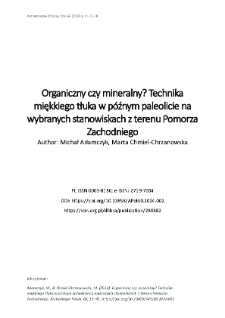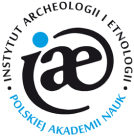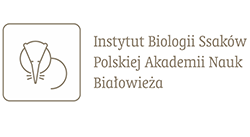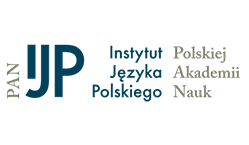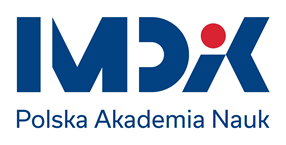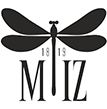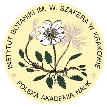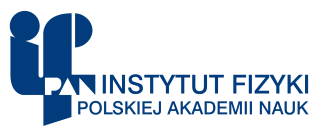- Search in all Repository
- Literature and maps
- Archeology
- Mills database
- Natural sciences
Advanced search
Advanced search
Advanced search
Advanced search
Advanced search

Object
Title: Organiczny czy mineralny? Technika miękkiego tłuka w późnym paleolicie na wybranych stanowiskach z terenu Pomorza Zachodniego
Publisher:
Instytut Archeologii i Etnologii Polskiej Akademii Nauk
Place of publishing:
Description:
Type of object:
Abstract:
This article presents the results of research on the technique of using a soft hammer to produce flint blades found at selected Late Palaeolithic sites in Western Pomerania. Material from three sites was analysed: Kocierz 3, Buniewice 7, and Wołczkowo 1. They are all associated with the Federmesser and Ahrensburgian cultures, and possibly the Bromme and Swiderian cultures, dated to the 12th and 11th millennia BCE. Also studied was currently prepared experimental products, the reference collection thus created including blades struck with mineral (stone) and organic (antler) hammers. All the studied items underwent dynamic techno-logical classification and subsequent statistical analysis. The results indicate that Palaeolithic flint knappers used both types of hammers with varying frequency. It was found that in older assemblages, the proportion of tools made with mineral hammers was significantly higher, while in later assemblages, these proportions were more equal. Variations were also observed depending on the position of the product in the chaîne opératoire.
References:
Adamczyk M. 2014. Buniewice, site 7: A collection of Tanged Points Technocomplex on the background of the Final Palaeolithic settlement of Pomeranian Bay, „Sprawozdania Archeologiczne”, 66, s. 177–220.
Adamczyk M. 2021. On the edge of the Lowland: the Ahrensburgian of Rügen, Usedom, Wolin and Bornholm Islands, „Materiały Zachodniopomorskie Nowa Seria”, 17, s. 37–68.
Adamczyk M. 2022. Wołczkowo: the Federmesser collection reconsidered, „Materiały Zachodniopomorskie Nowa Seria”, 18, s. 7–39.
Adamczyk M., Chmiel-Chrzanowska M. 2018. Useless stones? The potential of lithics in palaeodemographic research, „Sprawozdania Archeologiczne”, 70, s. 31–45, https://doi.org/10.23858/SA70.2018.002
Berg-Hansen I.M. 2018. Continuity and change in late- and post-glacial social networks: knowledge transmission and blade production methods in Ahrensburgian and Early Mesolithic north west Europe, [w:] K. Knutsson, H. Knutsson, J. Apel, H. Glørstad (red.), The early settlement of northern Europe, 2, Technology of early settlement in northern Europe. Transmission of knowledge and culture, Sheffield–Bristol, s. 63–98, https://doi.org/10.1558/equinox.30719
Berg-Hansen I.M. 2019. Alt Duvenstedt LA 121 revisited – blade technology in Ahrensburgian culture, [w:] B.V. Eriksen, E. Rensink, S. Harris (red.), The Final Palaeolithic of northern Eurasia. Proceedings of the Amersfoort, Schleswig and Burgos UISPP Commission Meetings, Schleswig, s. 169–192.
Berg-Hansen I.M., Damlien H., Zagorska I. 2019. The northern fringe of the Swiderian technological tradition: Salaspils Laukskola revisited, „Archaeologia Baltica”, 29, s. 12–31, https://doi.org/10.15181/ab.v26i0.2020
Czarnecki M. 1970. Z problematyki badań nad późnoplejstoceńskimi i wczesnoholoceńskimi przemysłami Pomorza Zachodniego, „Materiały Zachodniopomorskie”, 16, s. 31–71.
Czarnecki M. 1971. Wstępne badania wykopaliskowe paleolitycznego stanowiska w Kocierzu, pow. Gryfice, „Materiały Zachodniopomorskie”, 17, s. 7–16.
Czarnecki M. 1983. Początki zasiedlenia w paleolicie i mezolicie, [w:] W. Filipowiak, G. Labuda (red.), Dzieje Szczecina, 1, Pradzieje, Szczecin, s. 59–101.
Damlien H. 2015. Striking a difference? The effect of knapping techniques on blade attributes, „Journal of Archaeological Science”, 63, s. 122–135, https://doi.org/10.1016/j.jas.2015.08.020
Dziewanowski M. 2006. Flint assemblage Dręstwo 37. A preliminary analysis of predetermined Swiderian debitage, [w:] A. Wiśniewski, T. Płonka, J.M. Burdukiewicz (red.), The stone: technique and technology, Wrocław, s. 149–166.
Fischer A. 1988. A Late Palaeolithic flint workshop at Egtved, east Jutland – a glimpse of the Federmesser culture in Denmark, „Journal of Danish Archaeology”, 7, s. 7–23.
Fischer A., Clemmensen L.B., Donahue R., Heinemeier J., Lykke-Andersen H., Lysdahl P., Mortensen M.F., Olsen J., Petersen P.V. 2013. Late Palaeolithic Nørre Lyngby – a northern outpost close to the west coast of Europe, „Quartär”, 60, s. 137–162, https://doi.org/10.7485/QU60_7
Fletcher M., Lock G.R. 1995. Archeologia w liczbach. Podstawy statystyki dla archeologów, Poznań.
Fuglestvedt I. 2007. The Ahrensburgian Galta 3 site in SW Norway. Dating, technology and cultural affinity, „Acta Archaeologica”, 78(2), s. 87–110, https://doi.org/10.1111/j.1600-0390.2007.00101.x
Galiński T. 1983. Zagadnienie osadnictwa późnopaleolitycznego na terenie Pomorza, „Materiały Zachodniopomorskie”, 29, s. 23–49.
Galiński T. 1985. Wyniki badań wykopaliskowych przeprowadzonych na stanowiskach nr 2 i 3 w Tanowie w 1985 r., „Materiały Zachodniopomorskie”, 31, s. 71–83.
Galiński T. 1997. Materiały do mapy osadnictwa w epoce kamienia na Pomorzu Zachodnim, „Materiały Zachodniopomorskie”, 43, s. 7–98.
Galiński T. 1999. Stanowisko późnopaleolityczne w Kocierzy, „Materiały Zachodniopomorskie”, 45, s. 7–66.
Galiński T. 2006. Osadnictwo późnopaleolityczne w rejonie jeziora Świdwie na Pomorzu Zachodnim, „Materiały Zachodniopomorskie Nowa Seria”, 2/3(1), s. 43–78.
Galiński T. 2007. Rotnowo. Stanowisko paleolityczne i mezolityczne w Dolinie Lubieszowej na Pomorzu Zachodnim, Warszawa.
Galiński T. 2009. Badania paleolitu i mezolitu na Pomorzu Zachodnim w latach 1982–2006, [w:] M. Fudziński, H. Paner (red.), Aktualne problemy epoki kamienia na Pomorzu, Gdańsk, s. 85–115.
Galiński T. 2015a. Tanowo. Obozowiska łowców epoki paleolitu i mezolitu na Pomorzu, Warszawa.
Galiński T. 2015b. Bolków nad Jeziorem Świdwie. Nowe materiały kultury ahrensburskiej, „Materiały Zachodniopomorskie Nowa Seria”, 10(1), s. 7–114.
Galiński T. 2019. Paleolit i mezolit na Pomorzu, Szczecin.
Galiński T., Jankowska D. 2006. Bolków 1. Stanowisko z końca paleolitu i początków mezolitu nad jeziorem Świdwie na Pomorzu Zachodnim, „Materiały Zachodniopomorskie Nowa Seria”, 10(1), s. 79–176.
Grużdź W. 2018. An examination of theories on lithic reduction methods in Swiderian technology, [w:] K. Knutsson, H. Knutsson, J. Apel, H. Glørstad (red.), The early settlement of northern Europe, 2, Technology of early settlement in northern Europe. Transmission of knowledge and culture, Sheffield–Bristol, s. 47–61, https://doi.org/10.1558/equinox.30725
Grużdź W., Pyżewicz K., Migal W., Przeździecki M. 2012. Multi-aspect analysis of flint materials from Suchodółka, site 3, the Świętokrzyskie voivodeship, „Światowit”, Seria B, 9(50), s. 245–258.
Hartz S. 1987. Neue spätpaläolithische Fundplätze bei Ahrenshöft, Kreis Nordfriesland, „Offa”, 44, s. 5–52.
Inizian M.-L., Reduron-Ballinger M., Roche H., Tixier J. 1999. Technology and terminology of knapped stone, Préhistoire de la Pierre Taillée, 5, Nanterre.
Kabaciński J., Sobkowiak-Tabaka I. 2010. Between East and West – a new site of the Federmessergruppen in Poland, „Quartär”, 57, s. 139–154.
Kobusiewicz M. 1999. Ludy zbieracko-łowieckie północno-zachodniej Polski, Poznań.
Kotthaus J.K. 2019. The Federmesser site of Borneck-Ost, Ahrensburg tunnel valley: revisited results and new perspectives following re-analysis of the lithic material, [w:] B.V. Eriksen, E. Rensink, S. Harris (red.), The Final Palaeolithic of Northern Eurasia. Proceedings of the Amersfoort, Schleswig and Burgos UISPP Commission Meetings, Schleswig, s. 193–207.
Kowalski K. 2017. Epoka kamienia, [w]: E. Górkiewicz-Bucka (red.), Przeszłość odkryta. Powiat kamieński w świetle archeologii, Szczecin, s. 13–25.
Madsen B. 1992. Hamburgerkultur Flintteknologi i Jels, [w:] J. Holm, F. Rieck (red.), Istidsjægere ved Jelssøerne. Hamburgkulturen i Danmark, Skrifter fra Museumsrådet for Sønderjyllands Amt, 5, Haderslev, s. 93–131.
Madsen B. 1996. Late Palaeolithic cultures of south Scandinavia – tools, traditions and technology, [w:] L. Larsson (red.), The earliest settlement of Scandinavia and its relationship with neighbouring areas, Acta Archaeologica Lundensia, 24, Stockholm, s. 61–73.
Migal W. 2006. On various methods of Lyngby point production, [w:] A. Wiśniewski, T. Płonka, J.M. Burdukiewicz (red.), The stone: technique and technology, Wrocław, s. 137–148.
Migal W. 2007. On preferential points of the Final Paleolithic in the Central European Lowland, [w:] M. Kobusiewicz, J. Kabaciński (red.), Studies in Final Paleolithic of the Great European Plain, Poznań, s. 185–200.
Pyżewicz K., Grużdź W., Rozbiegalski P., Rakoca A. 2020. Two methods of blade production among Arch-Backed Point groups – a case study from the western Polish Lowland, [w:] S.B. Grimm, M.-J. Weber, L. Mevel, I. Sobkowiak-Tabaka (red.), From the Atlantic to beyond the Bug river. Finding and defining the Federmesser-Gruppen/Azilian. Proceedings of Session A5b (Commission »The Final Palaeolithic of Northern Eurasia«) of the XVIIth UISPP Congress, Burgos, September 2014, RGZM-Tagungen, 40, Mainz, s. 91–104.
Sawicki L. 1922. Przyczynek do znajomości techniki obróbki krzemienia, „Wiadomości Archeologiczne”, 7, s. 58–77.
Schild R. 1975. Późny paleolit, [w:] W. Chmielewski, W. Hensel (red.), Prahistoria Ziem Polskich, 1, Paleolit i mezolit, Wrocław, s. 159–338.
Schild R., Marczak M., Królik H. 1975. Późny mezolit. Próba wieloaspektowej analizy otwartych stanowisk piaskowych, Wrocław.
Sobkowiak-Tabaka I. 2011. Społeczności późnego paleolitu w dorzeczu Odry, Poznań.
Sobkowiak-Tabaka I. 2017. Rozwój społeczności Federmesser na Nizinie Środkowoeuropejskiej, Poznań.
Sobkowiak-Tabaka I., Okuniewska-Nowaczyk I., Ratajczak-Szczerba M. 2019. Lateglacial human occupation in the Lubrza region (Łagów Lake district, western Poland), [w:] B.V. Eriksen, E. Rensink, S. Harris (red.), The Final Palaeolithic of Northern Eurasia. Proceedings of the Amersfoort, Schleswig and Burgos UISPP Commission Meetings, Schleswig, s. 277–298.
Sobkowiak-Tabaka I., Winkler K. 2017. The Ahrensburgian and the Swiderian in the area around the middle Oder river: reflections on similarities and differences, „Quartär”, 64, s. 217–240.
Sørensen M. 2006a. Teknologiske traditioner i Maglemosekulturen. En diakron analyse af Maglemosekulturens flækkeindustri, [w:] B.V. Eriksen (red.), Stenalderstudier. Tidligt mesolitiske jægere og samlere i Sydskandinavien, Jysk Arkæologisk Selskabs Skrifter, 55, Højbjerg, s. 19–75.
Sørensen M. 2006b. Rethinking the blade definition: towards a dynamic understanding, [w:] J. Apel, K. Knutsson (red.), Skilled production and social reproduction. Aspects of traditional stone-tool technologies, SAU Stone Studies, 2, Uppsala, s. 277–296.
Sørensen M. 2008. Spatial analysis by dynamic technological classification: a case study from the Palaeolithic – Mesolithic transition in Scandinavia, [w:] M. Sørensen, P. Desrosiers (red.), Technology in archaeology, Publications from the National Museum. Studies in archaeology & history, 14, Copenhagen, s. 107–125.
Sørensen M. 2012. The arrival and development of pressure blade technology in southern Scandinavia, [w:] P.M. Desrosiers (red.), The emergence of pressure blade making. From origin to modern experimentation, New York, s. 237–259.
Sørensen M. 2013. „Dynamical technological classification of Scandinavian lithic blade industries”, Kopenhaga, maszynopis, Uniwersytet Kopenhaski.
Tatarzycki P. 2007. Statystyka po ludzku, Gliwice.
Taute W. 1968. Die Stielspitzen-Gruppen in nördlichen Mitteleuropa, Köln–Wien.
Valentin B., Weber M.-J., Bodu P. 2014. Initialisation and progression of the core reduction process at Donnemarie-Dontilly (Seine-et-Marne, France), site of the Belloisian tradition. New interpretative key for comparisons with contemporaneous industries and Federmesser-Gruppen assemblages, „Bulletin de la Société préhistorique française”, 111(4), s. 659–678.
Weber M.-J., Clausen I., Housley R.A., Miller C.E., Riede F., Usinger H. 2010. New information on the Havelte Group site Ahrenshöft LA 58 D (Nordfriesland, Germany) – Preliminary results of the 2008 fieldwork, „Quartär”, 57, s. 7–24.
Weber M.-J., Valentin B., Bodu P. 2019. It’s all about volume – New observations on specific aspects of core reduction at the Belloisian site Donnemarie-Dontilly (Seine-et-Marne, France), [w:] B.V. Eriksen, E. Rensink, S. Harris (red.), The Final Palaeolithic of northern Eurasia. Proceedings of the Amersfoort, Schleswig and Burgos UISPP Commission Meetings, Schleswig, s. 91–104.
Whittaker J.C. 1994. Flintknapping: making and understanding stone tools, Austin.
Relation:
Volume:
Start page:
End page:
Detailed Resource Type:
Format:
Resource Identifier:
oai:rcin.org.pl:243869 ; 0003-8180 ; doi:10.23858/APol69.2024.002
Source:
IAiE PAN, call no. P 320 ; IAiE PAN, call no. P 321 ; IAiE PAN, call no. P 319 ; click here to follow the link
Language:
Language of abstract:
Rights:
Creative Commons Attribution BY 4.0 license
Terms of use:
Copyright-protected material. [CC BY 4.0] May be used within the scope specified in Creative Commons Attribution BY 4.0 license, full text available at: ; -
Digitizing institution:
Institute of Archaeology and Ethnology of the Polish Academy of Sciences
Original in:
Library of the Institute of Archaeology and Ethnology of the Polish Academy of Sciences
Access:
Object collections:
- Digital Repository of Scientific Institutes > Partners' collections > Institute of Archeology and Ethnology PAS
- Digital Repository of Scientific Institutes > Partners' collections > Institute of Archeology and Ethnology PAS > Institute Publications
- Digital Repository of Scientific Institutes > Partners' collections > Institute of Archeology and Ethnology PAS > Institute Publications > Current Journals
- Digital Repository of Scientific Institutes > Literature
- Digital Repository of Scientific Institutes > Literature > Journals/Articles
- Digital Repository of Scientific Institutes > Partners' collections > Institute of Archeology and Ethnology PAS > Institute Publications > Current Journals > Archeologia Polski
Last modified:
Mar 20, 2025
In our library since:
Jan 26, 2025
Number of object content downloads / hits:
6
All available object's versions:
https://rcin.org.pl./publication/280882
Show description in RDF format:
Show description in RDFa format:
Show description in OAI-PMH format:
Objects Similar
Viscardi, Tomasz Brzeski, Michał Wacław
Kabaciński, Jacek Sobkowiak-Tabaka, Iwona
Bobak, Dariusz Połtowicz-Bobak, Marta
Adamczyk, Michał Chmiel-Chrzanowska, Marta
Chmiel-Chrzanowska, Marta Adamczyk, Michał

 INSTYTUT ARCHEOLOGII I ETNOLOGII POLSKIEJ AKADEMII NAUK
INSTYTUT ARCHEOLOGII I ETNOLOGII POLSKIEJ AKADEMII NAUK
 INSTYTUT BADAŃ LITERACKICH POLSKIEJ AKADEMII NAUK
INSTYTUT BADAŃ LITERACKICH POLSKIEJ AKADEMII NAUK
 INSTYTUT BADAWCZY LEŚNICTWA
INSTYTUT BADAWCZY LEŚNICTWA
 INSTYTUT BIOLOGII DOŚWIADCZALNEJ IM. MARCELEGO NENCKIEGO POLSKIEJ AKADEMII NAUK
INSTYTUT BIOLOGII DOŚWIADCZALNEJ IM. MARCELEGO NENCKIEGO POLSKIEJ AKADEMII NAUK
 INSTYTUT BIOLOGII SSAKÓW POLSKIEJ AKADEMII NAUK
INSTYTUT BIOLOGII SSAKÓW POLSKIEJ AKADEMII NAUK
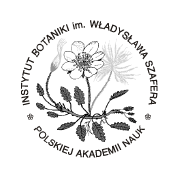 INSTYTUT CHEMII FIZYCZNEJ PAN
INSTYTUT CHEMII FIZYCZNEJ PAN
 INSTYTUT CHEMII ORGANICZNEJ PAN
INSTYTUT CHEMII ORGANICZNEJ PAN
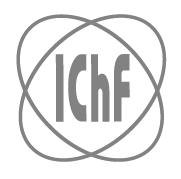 INSTYTUT FILOZOFII I SOCJOLOGII PAN
INSTYTUT FILOZOFII I SOCJOLOGII PAN
 INSTYTUT GEOGRAFII I PRZESTRZENNEGO ZAGOSPODAROWANIA PAN
INSTYTUT GEOGRAFII I PRZESTRZENNEGO ZAGOSPODAROWANIA PAN
 INSTYTUT HISTORII im. TADEUSZA MANTEUFFLA POLSKIEJ AKADEMII NAUK
INSTYTUT HISTORII im. TADEUSZA MANTEUFFLA POLSKIEJ AKADEMII NAUK
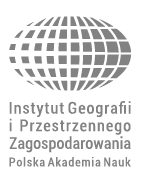 INSTYTUT JĘZYKA POLSKIEGO POLSKIEJ AKADEMII NAUK
INSTYTUT JĘZYKA POLSKIEGO POLSKIEJ AKADEMII NAUK
 INSTYTUT MATEMATYCZNY PAN
INSTYTUT MATEMATYCZNY PAN
 INSTYTUT MEDYCYNY DOŚWIADCZALNEJ I KLINICZNEJ IM.MIROSŁAWA MOSSAKOWSKIEGO POLSKIEJ AKADEMII NAUK
INSTYTUT MEDYCYNY DOŚWIADCZALNEJ I KLINICZNEJ IM.MIROSŁAWA MOSSAKOWSKIEGO POLSKIEJ AKADEMII NAUK
 INSTYTUT PODSTAWOWYCH PROBLEMÓW TECHNIKI PAN
INSTYTUT PODSTAWOWYCH PROBLEMÓW TECHNIKI PAN
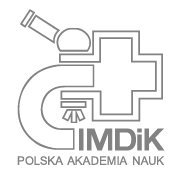 INSTYTUT SLAWISTYKI PAN
INSTYTUT SLAWISTYKI PAN
 SIEĆ BADAWCZA ŁUKASIEWICZ - INSTYTUT TECHNOLOGII MATERIAŁÓW ELEKTRONICZNYCH
SIEĆ BADAWCZA ŁUKASIEWICZ - INSTYTUT TECHNOLOGII MATERIAŁÓW ELEKTRONICZNYCH
 MUZEUM I INSTYTUT ZOOLOGII POLSKIEJ AKADEMII NAUK
MUZEUM I INSTYTUT ZOOLOGII POLSKIEJ AKADEMII NAUK
 INSTYTUT BADAŃ SYSTEMOWYCH PAN
INSTYTUT BADAŃ SYSTEMOWYCH PAN
 INSTYTUT BOTANIKI IM. WŁADYSŁAWA SZAFERA POLSKIEJ AKADEMII NAUK
INSTYTUT BOTANIKI IM. WŁADYSŁAWA SZAFERA POLSKIEJ AKADEMII NAUK
